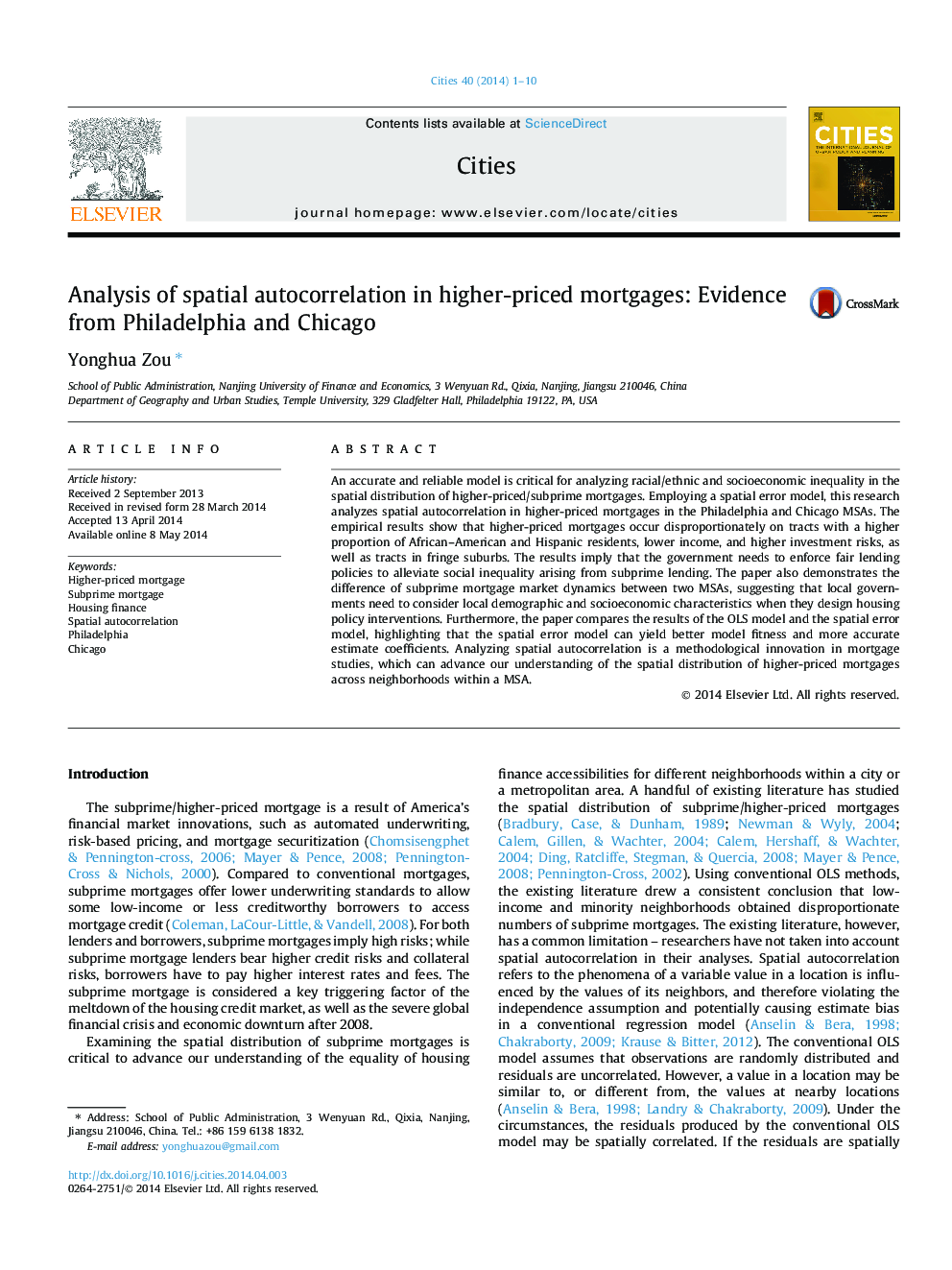| Article ID | Journal | Published Year | Pages | File Type |
|---|---|---|---|---|
| 1008349 | Cities | 2014 | 10 Pages |
•Analyzing spatial autocorrelation in higher-priced mortgages of Philadelphia and Chicago.•Higher-priced mortgages occur disproportionately on some specific tracts.•Spatial models yield better fitness and more accurate estimate coefficients than OLS models.•Providing policy implications to enforce the fair lending laws and alleviate social inequality.
An accurate and reliable model is critical for analyzing racial/ethnic and socioeconomic inequality in the spatial distribution of higher-priced/subprime mortgages. Employing a spatial error model, this research analyzes spatial autocorrelation in higher-priced mortgages in the Philadelphia and Chicago MSAs. The empirical results show that higher-priced mortgages occur disproportionately on tracts with a higher proportion of African–American and Hispanic residents, lower income, and higher investment risks, as well as tracts in fringe suburbs. The results imply that the government needs to enforce fair lending policies to alleviate social inequality arising from subprime lending. The paper also demonstrates the difference of subprime mortgage market dynamics between two MSAs, suggesting that local governments need to consider local demographic and socioeconomic characteristics when they design housing policy interventions. Furthermore, the paper compares the results of the OLS model and the spatial error model, highlighting that the spatial error model can yield better model fitness and more accurate estimate coefficients. Analyzing spatial autocorrelation is a methodological innovation in mortgage studies, which can advance our understanding of the spatial distribution of higher-priced mortgages across neighborhoods within a MSA.
